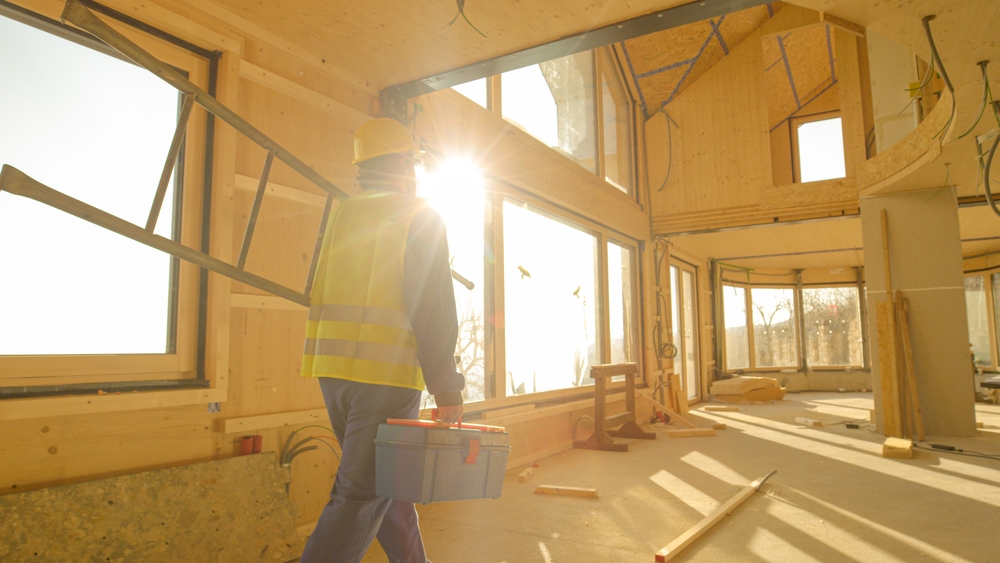Construction Technology Trend – Prefabrication
Published on 18 Dec, 2020

The construction industry is in the throes of a massive shift as it embraces innovative technologies to improve productivity, reduce lead times, and ensure the safety of its workforce. One such new trend – prefabrication – is rapidly gaining popularity. Prefabrication allows the optimal utilization of resources, enables smooth operations, and ensures high-quality construction work.
Technological advancements have made processes and activities more seamless, systematic and efficient across industries. The construction industry has also benefitted from these developments, with one such trend, prefabrication (prefab), gaining rapid traction.
Technically, in prefab construction, building components are pre-made at certain locations (factory or manufacturing site) and then transported to the final site for assembly and installation. The global prefab segment is expected to reach USD 153 billion by 2023. There is a negative perception about prefab construction as it is considered a mass production and therefore, low-quality. However, prefab construction actually improves quality and can be applied to a variety of budgets.
There are various advantages associated with prefab construction. Some of these are:
- Sustainable option – Prefab is energy-efficient and eco-friendly. While traditional construction usually creates waste, prefab assemblies are constructed in a factory and any extra material is usually recycled. Therefore, wasteful consumption of construction material, which would then end up at landfills, will be greatly reduced. Furthermore, the need for less equipment and material at construction sites reduces noise and air pollution levels.
- Financial savings – Modular construction would be an affordable option for all budgets. Most prefab manufacturers receive bulk discounts from material suppliers, which allows them to reduce their construction costs. Since this also eliminates unnecessary expenses associated with unreliable contractors, material wastage, and the number of on-site laborers, it further boosts savings. Prefab reduces construction time significantly, and thus also cost.
- Greater, consistent quality – Construction in a controlled environment makes for fewer errors and greater efficiency. As such construction follows specific standards, each section and sub-assembly is uniform. Furthermore, multiple quality checks at various points in the process ensures precision. Any code of conduct mandated is strictly adhered to, thus increasing safety and quality.
- Workforce safety – With changing ground conditions, complex processes, unsuitable weather, and equipment mishaps, construction sites can be hazardous to people working on one. In prefab construction projects, on-site work is limited and, consequently, chances of an accident. Although there could be accidents in a factory, the chances of it are far fewer.
- Flexibility – Prefab allows for flexibility in construction as units can be disassembled and relocated. Modular construction also offers flexibility in the design of a structure so that it can blend in with its natural surroundings.
Outlined here are some factors that favor the growth of prefab construction in the current times.
- Recessionary period – The world economy at this time has crashed due to the global pandemic. Companies are facing cash crunch and seeking cost-effective solutions for construction projects. As prefab construction can work even within restrained budgets, it is viewed as a viable option.
- Saturated industry – The construction industry, as such, is quite fragmented and intensely competitive. Players are constantly on the look-out for ways to get ahead in the race. With prefab construction, builders can offer customized products and thus become a favorite.
Outlook
Prefab construction offers several advantages that make it cost-effective, efficient, and streamlined. With the integration of technologies such as artificial intelligence and robotics, factory processes are becoming smarter and more precise.
In the US and Europe, prefab construction is widely adopted and accepted. It helps mitigate house shortages in the US within highly populated cities such as San Francisco and New York. With the spiraling cost of labor, permits, and land, customers prefer prefab. Though the global pandemic has disrupted the worldwide construction industry, the prefab sector was less impacted. And as off-site construction of medical infrastructure and diagnostic centers continued to grow during this period, the global prefab construction segment did well.
Thus, the global prefabrication industry is poised to take off on an upward growth trajectory.
